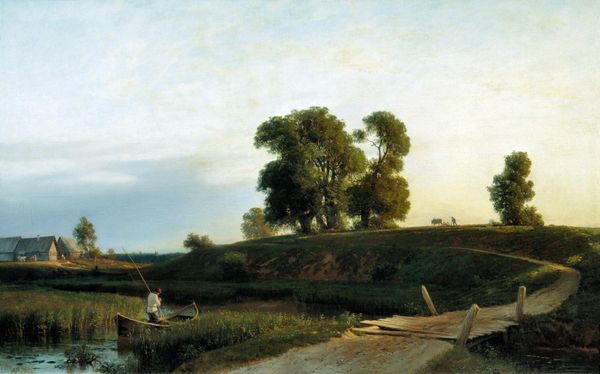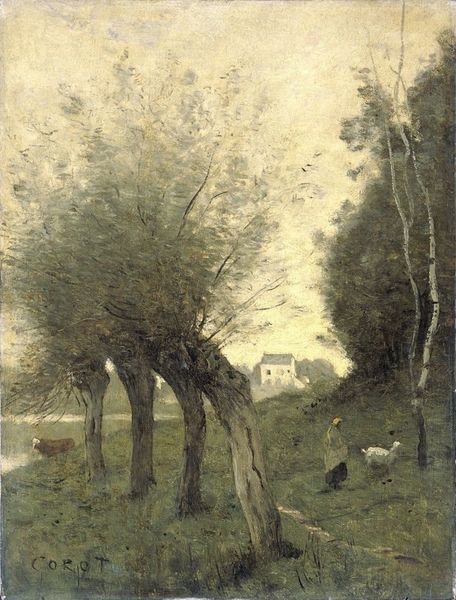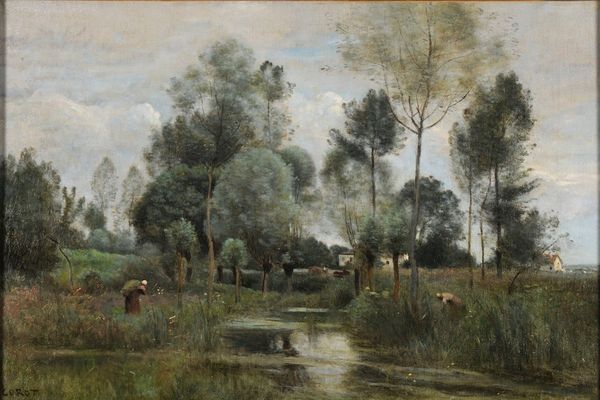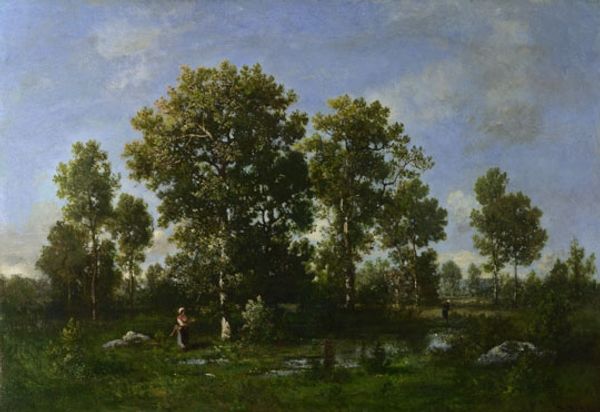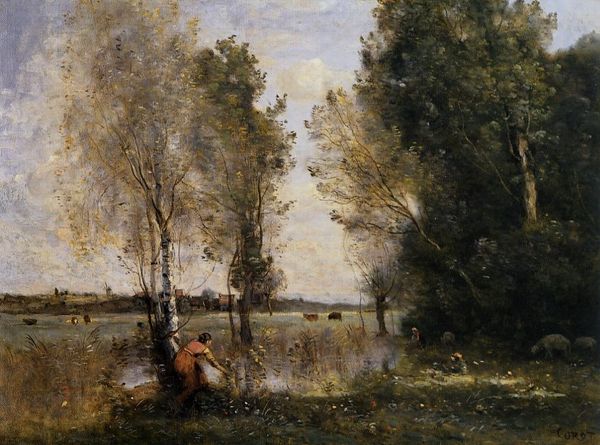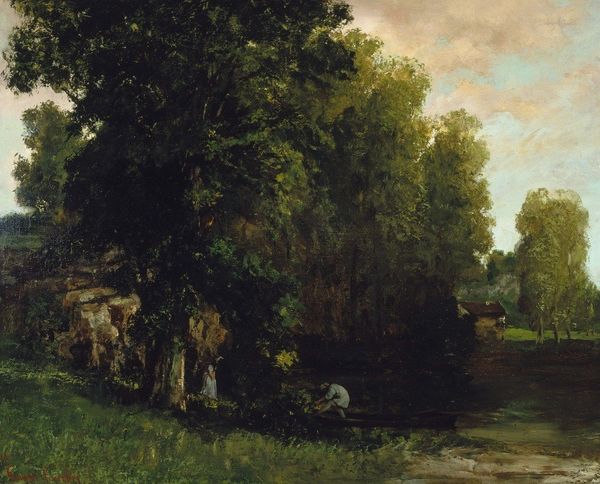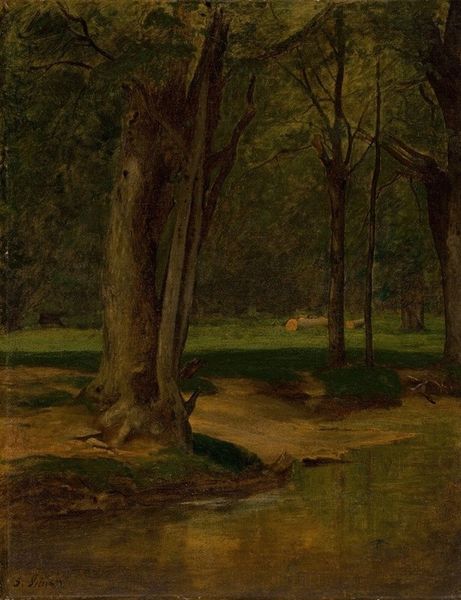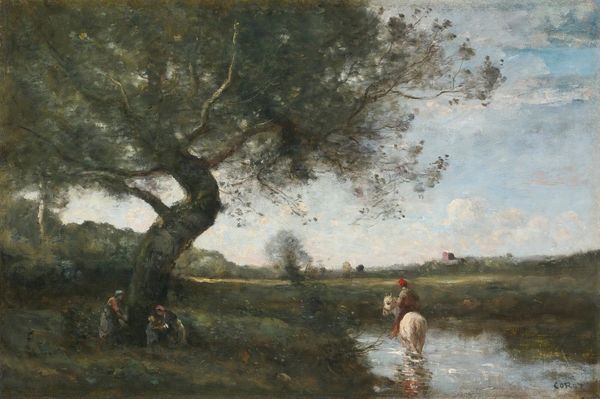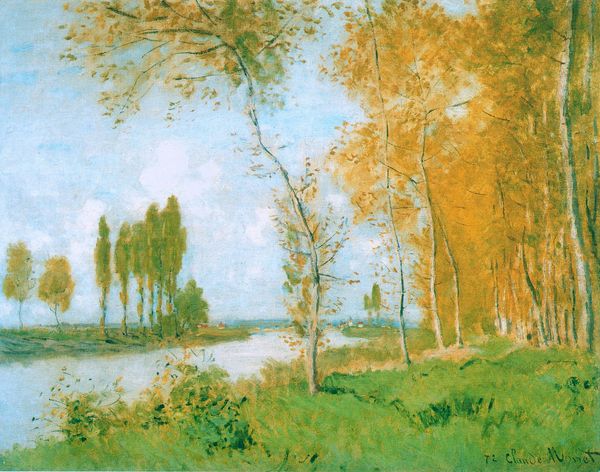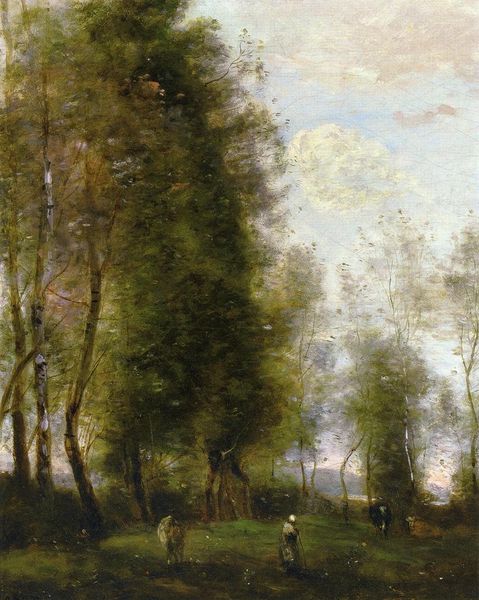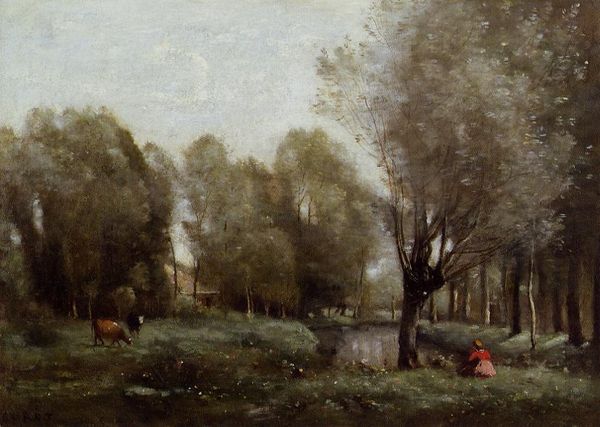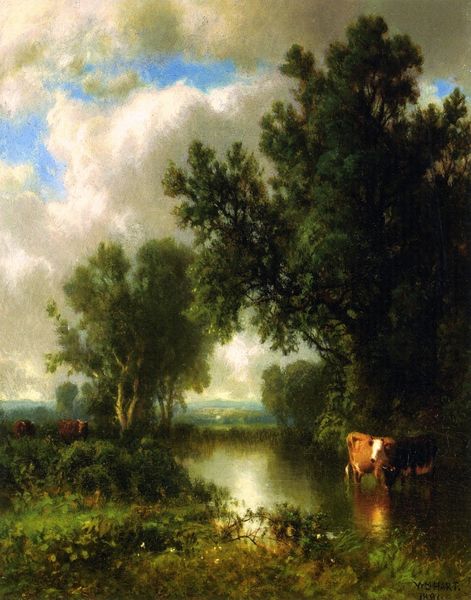
oil-paint
#
oil-paint
#
landscape
#
figuration
#
nature
#
oil painting
#
romanticism
#
symbolism
Copyright: Public Domain: Artvee
Arnold Böcklin painted "Summer Day" in the late 19th century using oil on canvas, a typical combination for the era. However, his technique pushes the boundaries of tradition. Look closely, and you can see how Böcklin built up layers of paint, creating a sense of depth and texture. The thick impasto of the foliage contrasts with the smooth, almost dreamlike quality of the sky and water. It's a meticulous process, requiring patience and a keen understanding of the material properties of oil paint, and of course, the artist's skill. The application of the paint reveals a tension between control and spontaneity. Böcklin was working during the rise of industrialization, yet his work reflects a yearning for an idealized, pre-industrial past. The sheer labor involved in creating such a detailed scene underscores the value he placed on individual craftsmanship, a subtle resistance to the mass-produced aesthetics of the time. Ultimately, "Summer Day" reminds us that even seemingly straightforward paintings are the product of complex choices about materials, process, and cultural context. It challenges us to look beyond the surface and consider the artist's hand in shaping our understanding of the world.
Comments
No comments
Be the first to comment and join the conversation on the ultimate creative platform.
